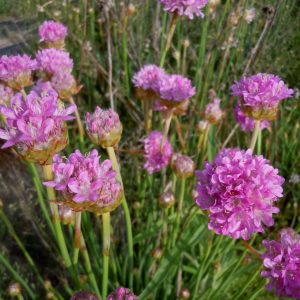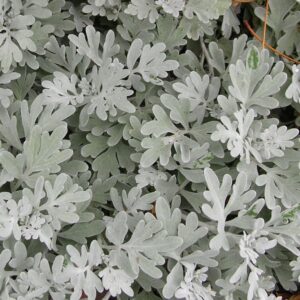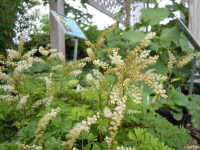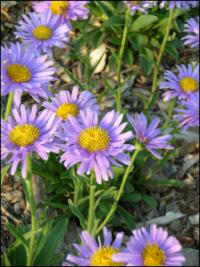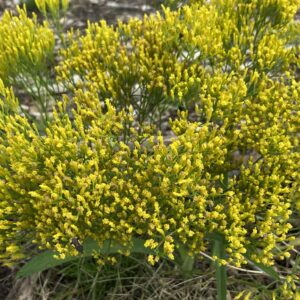Alpine, Rock, Miniature, Bonsai and Railroad Gardens
- Sorry, this product cannot be purchased.
Showing 17–24 of 92 results
-
Armeria maritima Thrift, Sea pink Z 3-10
Petite pink balls from May to June atop grass-like foliage
Petite pink balls from May to June atop grass-like foliage
Size: 8” x 12”
Care: full sun, well-drained, moderately fertile soil
Native: North Atlantic coastsKnown to grow in the late Glacial period – around 10,000 BC. Common cottage garden flower since the reign of Queen Elizabeth 1st, 16th century. A favorite plant for knot gardens.
-
Armeria pseudoarmeria syn. A. formosa syn. A. latifolia, A. alpina Alpine thrift, Giant thrift Z 5-7
Carmine-pink balls atop stems and taller than grass-like foliage flowering in June and sporadically all summer
OUT OF STOCK
Carmine-pink balls atop stems and taller than grass-like foliage flowering in June and sporadically all summer
Size: 12” x 8”
Care: full sun in well-drained soil, heat and drought tolerant
Native: So. EuropeIn gardens since 1740. Per Wm Robinson this plant: “one of the best hardy flowers from southern Europe and should be in every collection.”
-
Artemisia stellerana Beach wormwood, Dusty miller Z 3-7
Intricate, embroidery-like, felty-white foliage
Grown for its intricate, embroidery-like, felty-white foliage
Can not ship to: Maryland
Size: 24” x 12”
Care: sun in moist well-drained to dry soil
Native: naturalized in North America from Massachusetts to DelawareArtemisia named for the wife of Mausolus, king of Caria, who began using another Artemisia. Miller 1768. Collected from the wild by 1842. Recommended by Gertrude Jekyll to use on the edges of gardens, 1908 L.H. Bailey (1933) described it as “attractive for its whiteness. Useful for borders.”
**LISTED AS OUT OF STOCK BECAUSE WE DO NOT SHIP THIS ITEM. IT IS AVAILABLE FOR PURCHASE AT OUR RETAIL LOCATION.
-
Aruncus aethusifolius Dwarf goat’s beard Z 3-8
You know the fireworks they display at the end of the night, with light bursting every direction from a center? These flowers resemble a tiny version of that, emerging in spring and early summer above a compact mound of fern-like foliage
You know the fireworks they display at the end of the night, with light bursting every direction from a center? These flowers resemble a tiny version of that, emerging in spring and early summer above a compact mound of fern-like foliage. Good foil for solid, paddle-like leaves of Bergenia.
Size: 10" x 12-18"
Care: part shade to shade in moist to well-drained soil
Native: Korea
Awards: Elizabeth Carey Miller Botanical Garden Great Plant Pick.Described in 1912 by Japanese botanist who explored Korea for plants, Takenoshin Nakai (1882-1952)
-
Asarum canadense syn. Hexastylis canadense Wild ginger Z 3-7
Concealed brown bell-shaped flowers with flared tips hide under this groundcover's crinkled, lacquered leaves.
Concealed brown bell-shaped flowers with flared tips hide under this groundcover’s crinkled, lacquered leaves.
Size: 6" x 6" spreading
Care: part shade to shade, moist well-drained to well-drained soil
Native: Canada to So. Carolina, Wisconsin nativeNative Americans used Wild ginger for such diverse purposes as flavoring food, curing heart palpitations, induce menstrual cycles, cure “the bite of the serpent,” mend broken bones, as a general tonic, a tea and lure catfish. Winnebago tenderized raccoon meat with this. Colonists used the plant to break fever and stimulate the appetite.
-
Aster alpinus Alpine Aster Z 5-7
Frilly little daisies, May-June, lavender, pink or white
OUT OF STOCK – EMAIL FOR AVAILABILITY
Frilly little daisies, May-June, lavender, pink or white. Plant where they’ll be seen in the front of the garden. Also good in rock gardens
Size: 6-10" x 18"
Care: Full sun well-drained soil. Drought tolerant & tolerant of Black walnut toxins
Native: Rockies
Wildlife Value: attract butterfliesAster means star referring to the flower form. Collected by Drummond in the Rockies by 1800.
-
Aurinia saxitilis syn. Alyssum saxatile Basket of Gold Z 4-7
Taxi cab yellow rounded, dense mass of flowers envelops the plant from May to June
Taxi cab yellow rounded, dense mass of flowers envelops the plant from May to June
Size: 10" x 12"
Care: Full sun well-drained soil, cut back after flowering to maintain compact form. Drought tolerant
Native: Central and southeastern Europe
Awards: England's Royal Horticultural Society Award of Garden MeritAncient Greeks may have used this to cure hydrophobia. English garden cultivation since 1710. Grown by Washington at Mount Vernon.
-
Bigelowia nuttallii Nuttall’s rayless goldenrod Z 4-10
Clouds of soft yellow flower clusters on this short plant rise on stems above grass-like foliage from mid-summer through fall
Clouds of soft yellow flower clusters on this short plant rise on stems above grass-like foliage from mid-summer through fall
Size: 6-10” x 5”
Care: sun in well-drained soil
Native: Southern US; TX, LA, AL, GA, FL
Wildlife Value: attracts beesPossibly collected by plant explorer Thomas Nuttall (1786-1859) before 1818, although not named until 1970 from plants collected on banks of Ohoopee River in Tattnall County GA.


